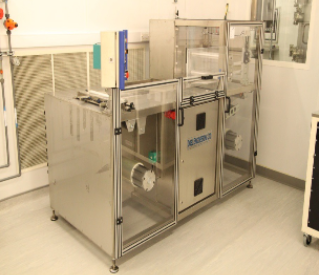Jul 31 2013
As part of the NanoMend project IBS Precision Engineering, Centre for Process Innovation limited (CPI) and the University of Huddersfield are collaborating in the development of a new optical interferometry system for fast surface measurement of low contrast defects over large, industrially–compatible substrate areas.
Defects present in thin films, such as vapour barrier layers, have contrasts too low to be picked-out by the machine vision camera systems conventionally used for defect detection.
The solution to this is to use optical interferometry, which is able to produce a quantitative measurement of the film layer topographies in the form of a three dimensional image. Analysis of thin film defects with interferometry can provide richer information on the nature of the defect, so its significance may be assessed.
Current industry standard interferometry systems generally work by mechanically scanning the position of a lens relative to the substrate being measured. Such a technique is too slow to perform the large number of measurements required to perform defect detection over a large area.

The instrument being developed as part of the NanoMend project is a Wavelength Scanning Interferometer (WSI) that can make 3D measurements without mechanical movement by simply varying the wavelength of the light source in an interferometer set-up. The aim is to produce a full 3D measurement and analysis in under one second.
Micro and nano-scale defects can be measured effectively in a factory environment because the WSI has integrated environmental noise compensation. As well as defects in film layers, the WSI can be used to measure smooth and structured surfaces.
By the end of the NanoMend project, in 2015, this apparatus will demonstrate that the WSI technology can be scaled-up to cover roll-to-roll manufacturing processes. The demonstrator will be located at CPI, which forms part of the UK’s new High-Value Manufacturing Catapult.
The pan-European NanoMend project has received €7.25 Million of funding from the Framework Seven Programme of the European Union. The consortium include a mix of industrial and academic partners, including; The University of Huddersfield, CPI, Lappeenranta University of Technology, Tampere University of Technology, TNO, Fraunhofer, NPL, Kite Innovation, Stora Enso, ISOVOLTAIC, Flisom AG, IBS Precision Engineering BV and ISRA Vision AG.